Removal Procedure
- Loosen the outlet duct clamp at the upper intake manifold cover.
- Remove the upper intake manifold cover from the outlet duct.
- Remove the upper intake manifold cover.
- If removing the right side valve, loosen the outlet duct clamps at the turbocharger and the mass air flow/intake air temperature (MAF/IAT) sensor.
- Remove the outlet duct.
- If removing the right side valve, loosen the charged air cooler outlet duct to intake hose clamp (1).
- Remove the charged air cooler outlet duct from the intake.
- If removing the left side valve, loosen the charged air cooler inlet duct to turbocharger clamp (1).
- Remove the charged air cooler inlet duct from the turbocharger.
- In order to access the right side valve, remove the heater outlet hose nut (1).
- Remove the heater outlet hose bolt (2).
- Position the heater outlet hose out of the way.
- Remove the positive crankcase ventilation (PCV) diaphragm cover screws.
- Remove the diaphragm cover.
- Remove the diaphragm and spring.
- Clean the diaphragm cover, spring, and screws.
- Inspect the diaphragm for cuts or damage.
- Discard the diaphragm if damage is found.
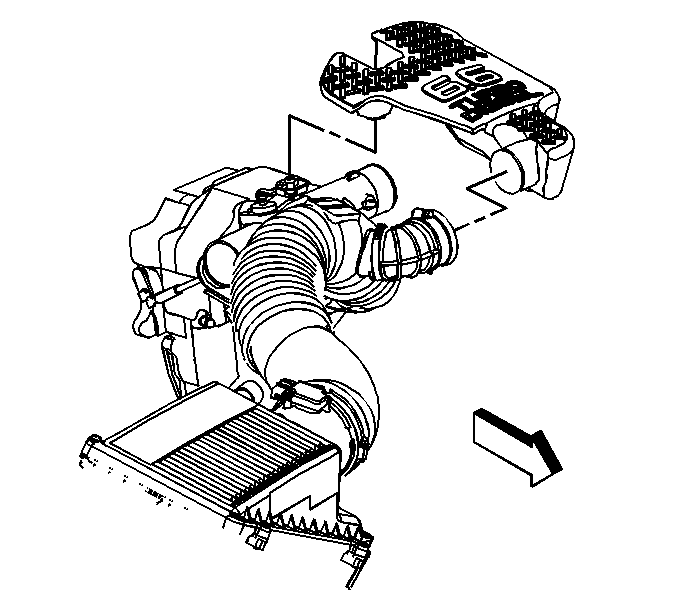
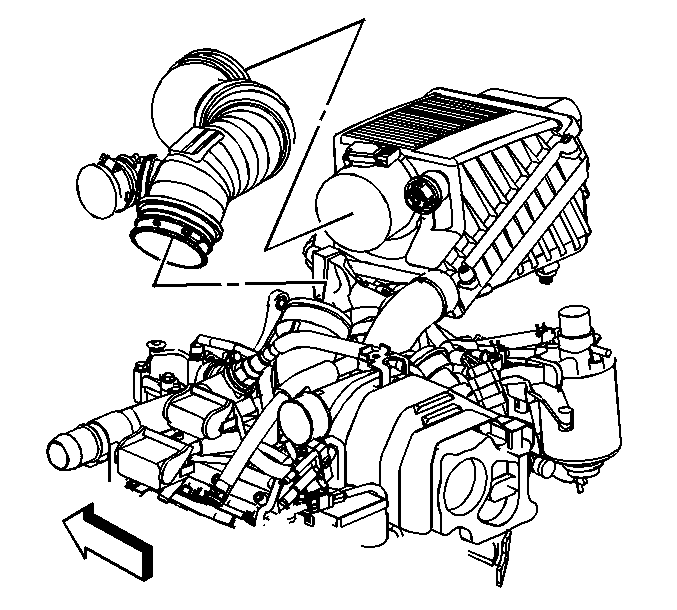
Important: After removing the turbocharger air ducts, cover the turbocharger openings with tape to prevent entry of objects.
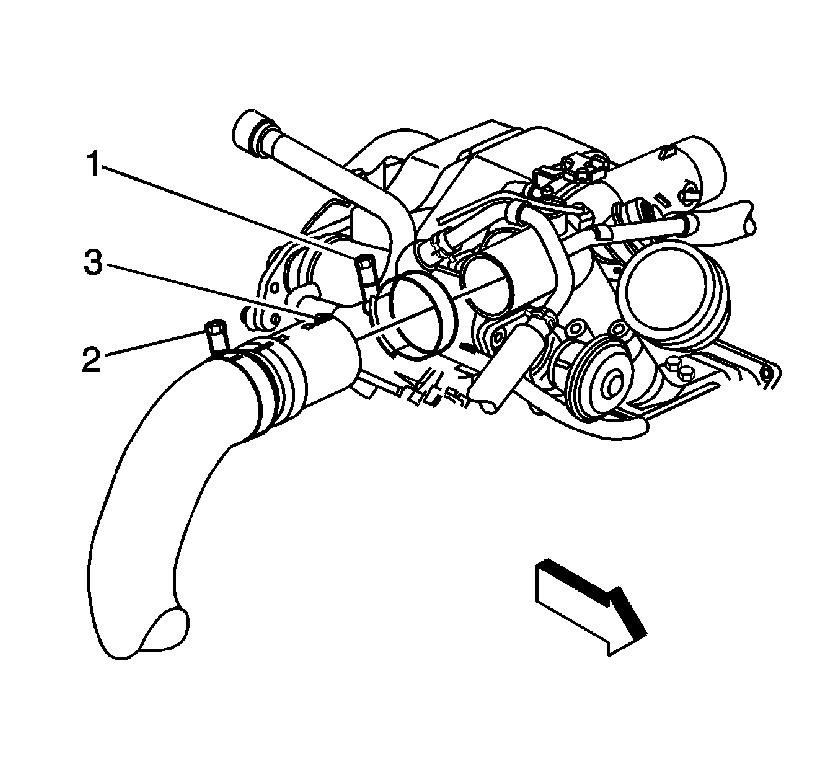
Important: Do not use a screwdriver or other tool to pry the hose loose. The hose can be torn or damaged. Loosen the hose by twisting.
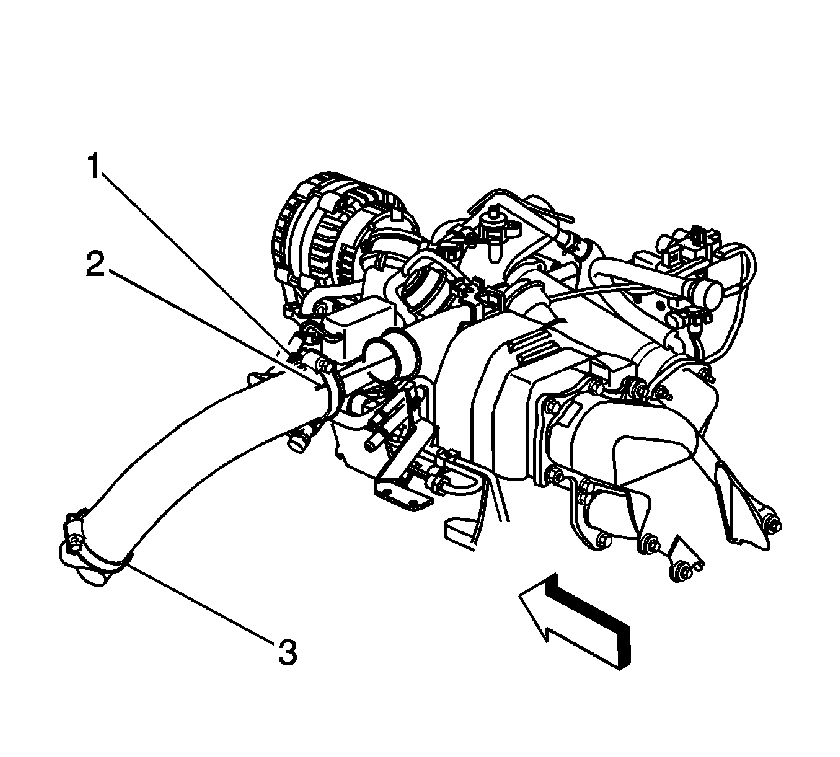
Important: Do not use a screwdriver or other tool to pry the hose loose. The hose can be torn or damaged. Loosen the hose by twisting.

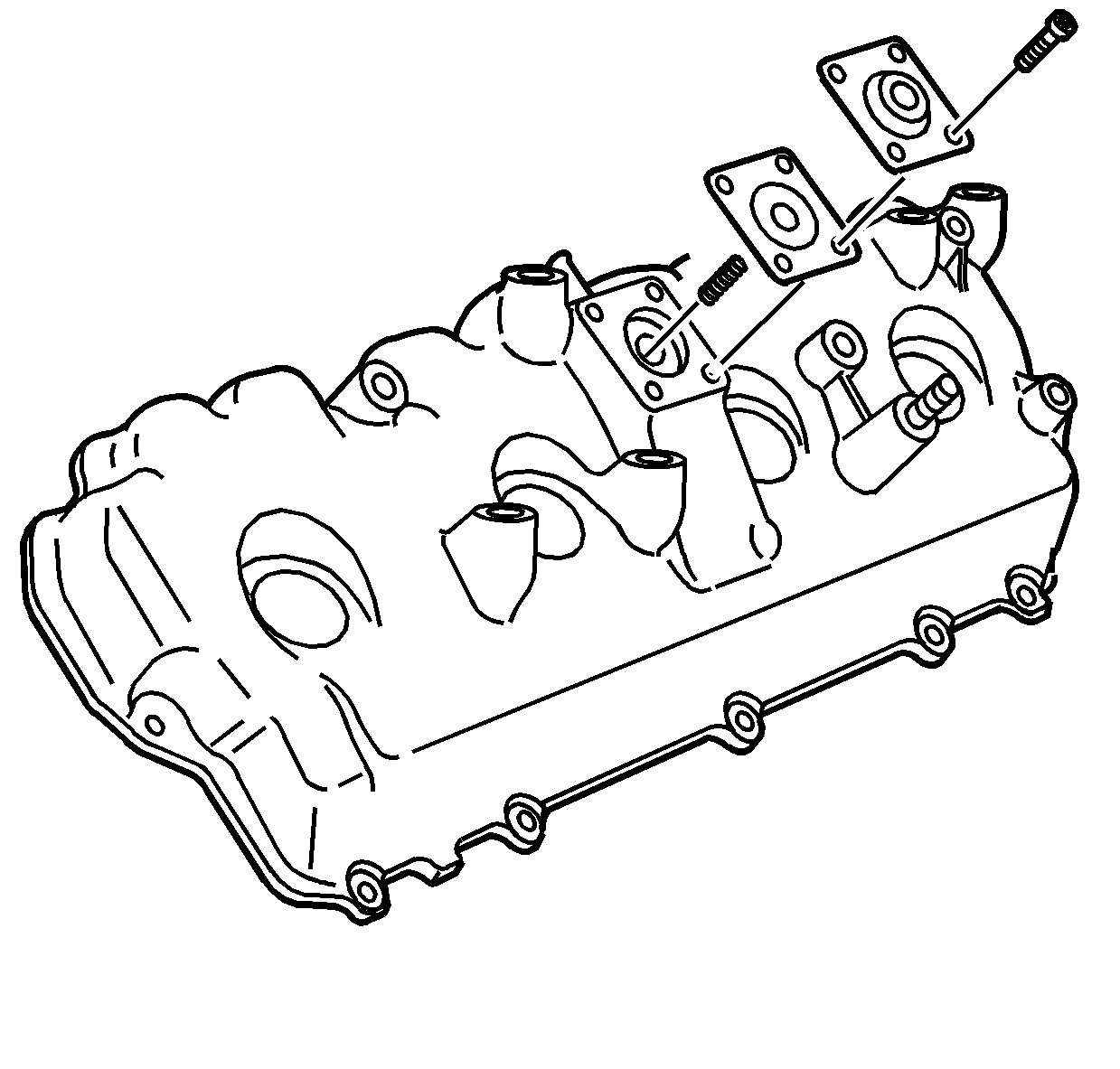
Installation Procedure
- Install the spring, diaphragm and cover.
- Install the PCV diaphragm cover screws.
- Position the heater outlet hose.
- Install the heater outlet hose nut (1) and bolt (2).
- Remove the tape from the turbocharger openings.
- Align the mark on the duct (2) with the mark on the turbocharger.
- Install the charged air cooler inlet duct to the turbocharger.
- Position the clamp (1) as shown for proper clearance.
- Install the charged air cooler outlet duct to the intake.
- Position the clamp (1) as shown for proper clearance.
- Install the outlet duct to the turbocharger.
- Align the outlet duct alignment indicator (1) to the turbocharger alignment indicator (2).
- Install the outlet duct to the MAT/IAT sensor.
- Tighten the outlet duct clamps at the turbocharger and the MAF/IAT sensor.
- Install the upper intake manifold cover.
- Install the upper intake manifold cover to the outlet duct.
- Tighten the outlet duct clamp at the upper intake manifold cover.

Notice: Use the correct fastener in the correct location. Replacement fasteners must be the correct part number for that application. Fasteners requiring replacement or fasteners requiring the use of thread locking compound or sealant are identified in the service procedure. Do not use paints, lubricants, or corrosion inhibitors on fasteners or fastener joint surfaces unless specified. These coatings affect fastener torque and joint clamping force and may damage the fastener. Use the correct tightening sequence and specifications when installing fasteners in order to avoid damage to parts and systems.
Tighten
Tighten the screws to 4 N·m (35 lb in).

Tighten
| • | Tighten the nut to 9 N·m (80 lb in). |
| • | Tighten the bolt to 25 N·m (18 lb ft). |

Tighten
Tighten the clamp to 6 N·m (53 lb in).

Align the mark on the duct (3) with the mark on the intake.
Tighten
Tighten the clamp to 6 N·m (53 lb in).
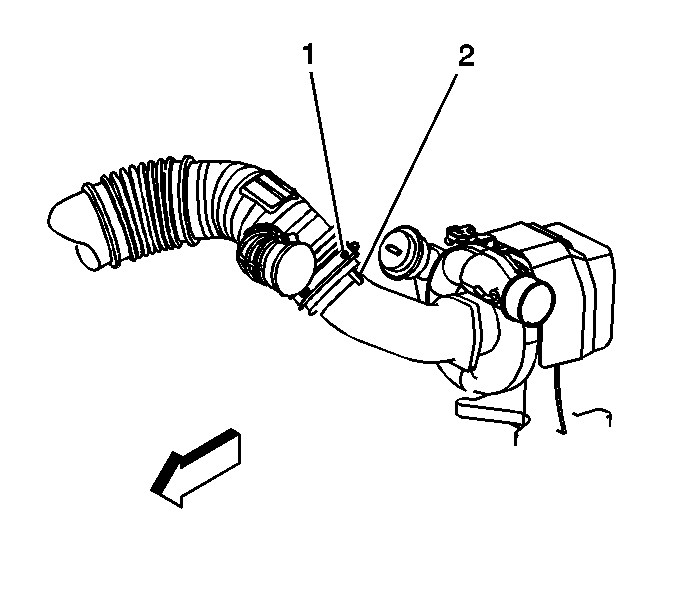

Important: The outlet duct must be fully seated against the MAT/IAT sensor with the edge of the seal in the vertical position.
Tighten
Tighten the clamps to 6 N·m (53 lb in).

Tighten
Tighten the clamp to 6 N·m (53 lb in).
